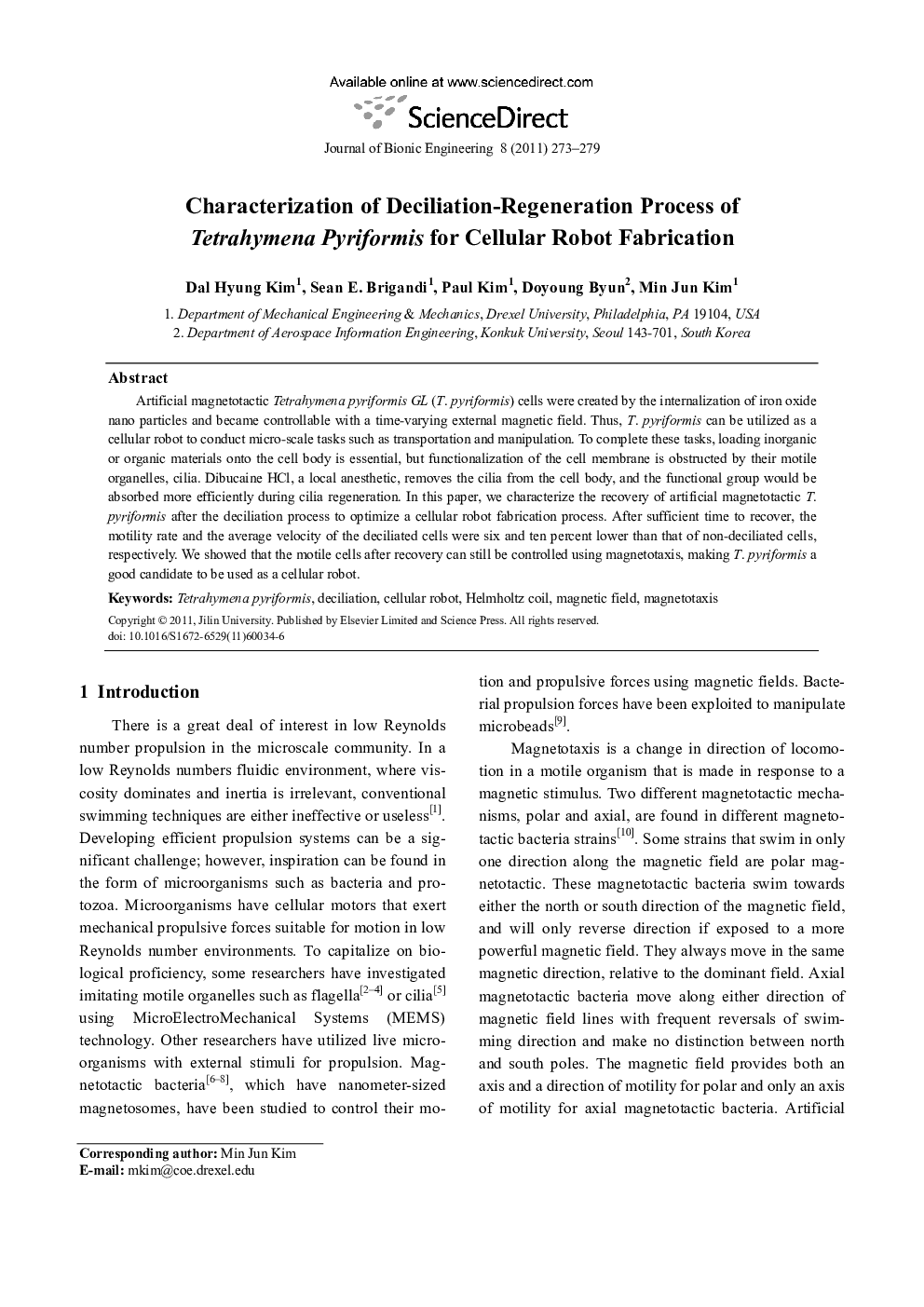| Article ID | Journal | Published Year | Pages | File Type |
|---|---|---|---|---|
| 826833 | Journal of Bionic Engineering | 2011 | 7 Pages |
Artificial magnetotactic Tetrahymena pyriformis GL (T. pyriformis) cells were created by the internalization of iron oxide nano particles and became controllable with a time-varying external magnetic field. Thus, T. pyriformis can be utilized as a cellular robot to conduct micro-scale tasks such as transportation and manipulation. To complete these tasks, loading inorganic or organic materials onto the cell body is essential, but functionalization of the cell membrane is obstructed by their motile organelles, cilia. Dibucaine HCl, a local anesthetic, removes the cilia from the cell body, and the functional group would be absorbed more efficiently during cilia regeneration. In this paper, we characterize the recovery of artificial magnetotactic T. pyriformis after the deciliation process to optimize a cellular robot fabrication process. After sufficient time to recover, the motility rate and the average velocity of the deciliated cells were six and ten percent lower than that of non-deciliated cells, respectively. We showed that the motile cells after recovery can still be controlled using magnetotaxis, making T. pyriformis a good candidate to be used as a cellular robot.
